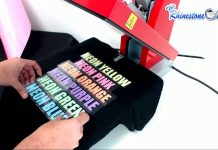Customer demand and environmental changes lead to the development of new products in the textile industry. Polyester is also on the list since it is a robust, flexible, and very durable synthetic fiber. Due to these features, polyester is now used in the making of outdoor mesh fabric. Emerging trends in polyester fabric are shifting the mode of production, uses, and perception of this fabric. This article is devoted to the new tendencies of polyester fabric in the textile industry.
Enhanced Fabric Properties
Polyester fabrics are being developed today to possess characteristics that consumers desire. These are increased air flow, increased sweat transport, and better skin interaction with the fabric. By integrating new fiber technologies and polyester with natural fibers, producers are able to create soft and valuable fabrics. For instance, moisture-wicking polyester fabric is used in the manufacturing of sportswear, knowing that the athletes will not sweat much during exercises.
Resistant Features
The hygiene factor and the stink factor are some of the most important factors to consumers, especially when it comes to exercising or casual wear. New trends in polyester fabric are antimicrobial and odor control. These treatments slow down the frequency of bacterial and fungal activities that are known to cause smell. This is not only good for the user interface but also helps increase the life cycle of the garments.
Innovative Fabrics
Some future trends in the textile industry are intelligent textiles and wearable technology in polyester fabrics. There is much more that smart textiles can capture, including pulse rate, temperature, and physical activity. These are especially useful in the sphere of health and sports because, in this case, it is necessary to receive information as soon as possible to affect the state of the person and their physical abilities. Polyester also possesses high tensile strength and flexibility, which makes it ideal for use in electronic components and sensors.
Environmental-Friendly Techniques
As well known, major dyeing and finishing processes, such as water, chemicals, and energy, impact the environment in general. New trends in natural dyeing processes are developing and changing the procedures used in dyeing polyester fabrics. Also, current advanced digital printing technologies enable one to get more precise and vivid designs with the least possible wastage.
Circular Economy Initiatives
The circular economy is one of the ideas that are gradually gaining popularity in the textile industry today. Advancements in technology have made it possible to recycle polyester fabric garments by breaking down the used garments into new polyester fibers. Used systems enable companies to depolyester the fabrics into their basic unit, which can be rewound into new yarns. Besides, it assists in minimizing the impacts on the environment and the enhancement of the textile sector.
Conclusion
At the moment, the textile industry has new trends in polyester fabric due to factors such as sustainability, functionality, and technology. These developments are not only improving the appearance and the feel of polyester apparel but also addressing some of the most significant ecological and medical challenges. In the future, the consumer can only wish for more new additions to the polyester fabric that will make it even more helpful and friendly to the environment.













